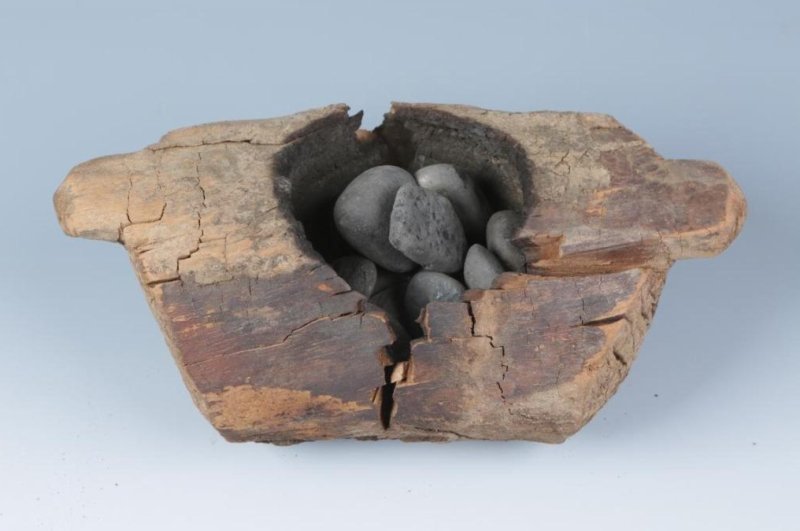Researchers measured elevated THC levels among cannabis remains found on ancient incense burners recovered from a cemetery in Central Asia. Photo by Xinhua Wu
June 12 (UPI) -- Today, marijuana is the most popular drug in the world, but little is known about when and how humans first began taking advantage of its psychoactive properties.
New research suggests the people of Central Asia were smoking marijuana as early as the first millennium B.C. Scientists were able to identify THC preserved in funerary incense burners recovered from an ancient cemetery in the Eastern Pamirs, an extension of the Himalayas.
Researchers didn't set out to study early cannabis use. Instead, they were interested in analyzing the early use of wooden burners in funeral rituals by the ancient inhabitants of the Pamir Mountains. But spectral analysis of chemicals on the burners matched the signature of cannabis. What's more, the ancient marijuana remains featured elevated levels of THC.
Cannabis plants have been cultivated in East Asia since at least 4000 B.C. However, the plants were harvested for their oily seeds and fiber; they boasted low levels of THC. The discovery of elevated THC levels on the ancient burners suggest humans had begun selecting plants with psychoactive qualities.
"The findings support the idea that cannabis plants were first used for their psychoactive compounds in the mountainous regions of eastern Central Asia, thereafter spreading to other regions of the world," Nicole Boivin, director of the Max Planck Institute for the Science of Human History, said in a news release.
Researchers estimate the people buried in the Jirzankal cemetery were part of a group of people that settled Inner Asia during the first millennium B.C. But according to isotopic analysis, some of the people buried in Jirzankal grew up elsewhere. The findings, published this week in the journal Science Advances, suggest settlements in Central Asia played an important role in the development of Eurasian trade.
The trade routes that formed the Silk Road connections between East and West facilitated cultural as well as material exchange between ancient civilizations. If Central Asian settlers were smoking pot, ritualistically or not, it's not farfetched to imagine travelers and traders picked up the habit on their way across the Pamirs and took it with them.
"The exchange routes of the early Silk Road functioned more like the spokes of a wagon wheel than a long-distance road, placing Central Asia at the heart of the ancient world," said Robert Spengler, an archaeobotanist at the Max Planck Institute. "Our study implies that knowledge of cannabis smoking and specific high-chemical-producing varieties of the cannabis plant were among the cultural traditions that spread along these exchange routes."
Though scientists can't yet be certain whether the people of the Pamirs were cultivating plants with higher THC levels or simply selecting more potent wild plants, the evidence suggests the plant's psychoactive properties were appreciated by humans at least 2,500 years ago.
"Modern perspectives on cannabis vary tremendously cross-culturally, but it is clear that the plant has a long history of human use, medicinally, ritually and recreationally, over countless millennia," Spengler said.















